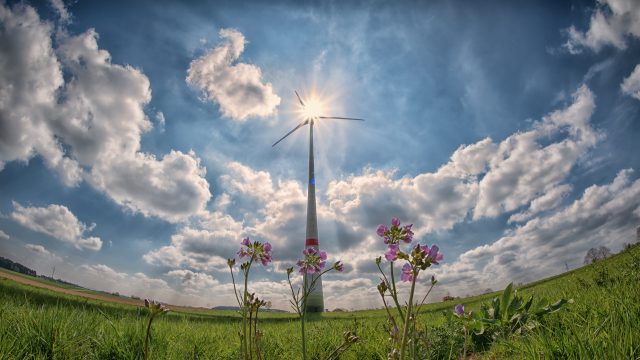There is no doubt that sustainable energy sources are the energy sources of the future. To encourage more people to embrace non-conventional energy sources such as wind, solar, etc, several government initiatives have been put into place. Being clean and renewable sources of power, subsidies and tax breaks aim to take more homes off the central electrical grid and to encourage use of solar and other clean energy sources.
Driving along national highways and state highways in India, particularly through states such as Tamil Nadu, Maharashtra and Gujarat, tall, elegant windmills gently rotating on the horizon have become a common sight. By the end of 2015, India had become the fourth largest in the world in terms of installed wind power capacity. Solar panels perched atop homes, factories, hotels, schools and other buildings are also common to see in our towns and villages.
India’s largely sunny climate with rains being restricted largely to the monsoon and vast expanse of plain terrain makes it particularly suitable for the development of solar and wind power. Because these are non polluting and renewable (they do not deplete like fossil fuels), the government encourages their use via various schemes.
Schemes for solar systems
NABARD (National Bank for Agriculture and Rural Development) and other government agencies offer tax breaks, cheap loans and subsidies to individuals, NGOs, clubs, farmer organizations, trusts and other bodies. The Capital Subsidy Scheme for Installation of Solar Photovoltaic Lighting System provides for sanctioning of loans and defines eligibility for subsidies. Benefits are available for six models of LED based lighting systems and six models of Solar Home Systems (Solar Power Packs-DC/AC models), and for systems purchased from empanelled manufacturers or resellers according to this NABARD page where more information is available about eligibility and procedures. Incentives include:
- 15% subsidy on solar power systems of up to 500 kW.
- Soft loans on remaining cost of acquisition. Find out more about Capital Subsidy Scheme for Solar Lighting and Small Capacity PV Systems and learn about unit costs, implementation period, insurance, eligibility and so on.
- Renewable Energy Certificates (RECs) – these are tradable instruments that can be availed for every generated unit of non-polluting, renewable power.
- Depreciation of 40% of total investment for enterprises that have installed rooftop solar systems.
- Discounts on total electricity bills of Bengaluru households with solar panels installed.
- 30% to 40% subsidy on the cost of lanterns, home lights and small systems (up to 210 Wp).
- There could be possible further reduction in solar power tariffs following the US exit from the Paris Climate agreement.
Read more about central and state policies on solar power.
Other renewable power incentives
The sort of area required for installation of wind turbines makes it difficult to set up in urban areas and so specific incentives from the government here are not very clear. However, there are incentives for small- and large-scale industry as well as individuals in the rural areas. Since rural India has always been very innovative when it comes to cheap indigenous renewable power sources such as cattle dung and other waste, there are other sources of off-grid power that can be considered: Bio-mass cogeneration, biomass gassifiers, incentives for waste to energy, water mills and/or micro hydel power generation, hybrid systems, aero generators and so on.
With the help of community-level programs and government incentives, there are close to five million family type biogas plants in the country today. Incentives include central subsidy ranging from Rs4000 to 14,700 per plant, free maintenance warranty extending to five years, financial support up to 50%, training of users, entrepreneurs and workers, and training centers and more. Frequently asked questions about biogas are answered on the MNRE site.
As responsible citizens it is up to us to think beyond the electrical grid and to make a conscious effort to reduce our dependence upon it. It is tragic that thousands of Indian villages are still not connected to the electrical grid (are not electrified). However, with the help of government and nongovernmental initiatives it may be possible to bypass the grid altogether. Do you recall programs such as the 2014 initiative that distributed 1.2 million home lighting solar systems to rural households without electricity? It was the biggest initiative of its kind involving solar energy. You and I together can do a whole lot more…if we set our minds to it!















































